
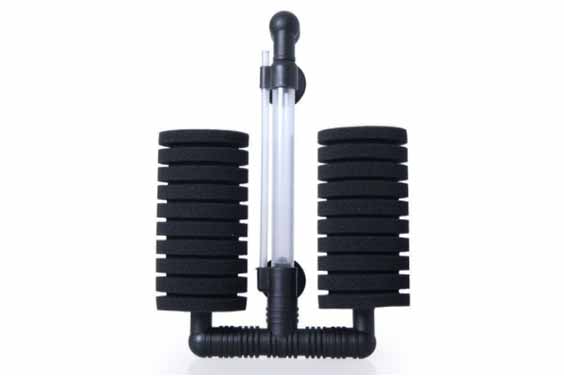
Source: tigermountainindustrial.com
Aquarium sponge filters have been around for a long time and work great to filter out any dirt residue or unwanted matter in fish tanks. They are quite simple and work great to fulfill their duties.
Most people however find this simplicity too good to be true that they doubt the performance of these filters. This is why you see most people going for more complex filtering options.
Even those who use the sponge filters may have no idea what it is, what it does, or how it works. This is important information that will give some insight into what you are investing in and what to expect.
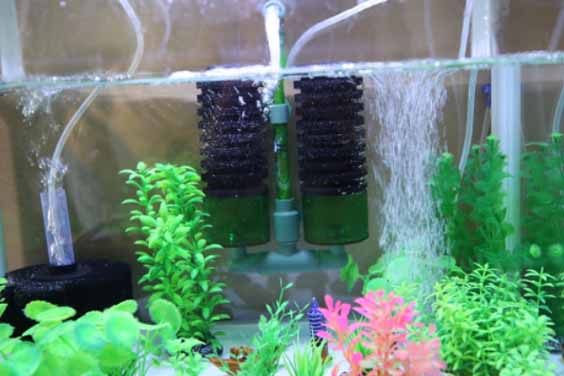
Source: fishtankauthority.com
This is a tool used in an aquarium to help filtrate and purify the water by removing all unwanted matter and leaving it clean. The water in the aquarium is sucked through the sponge where large debris is separated from the water leaving it clean.
It however allows small debris to go through the filter with the water and back to the aquarium. This is because most small debris is made up of good bacteria that is useful to the aquarium.
It keeps the water at the right PH and also supports the growth of the fish. This is mainly because the bacteria feeds on nitrogenous or nitrite waste found in the water leaving it clean.
This type of filtration is what is referred to as mechanical filtration. Given that the sponge filter is porous, you find that it may hold on to a lot of good bacteria. When the bacteria build up into colonies the sponge filter slowly adds on a biological filtration system.
This makes filtration even more effective seeing as you’re working with two different types at once. The sponge filters come in different sizes ensuring that they cater to the different needs people have.
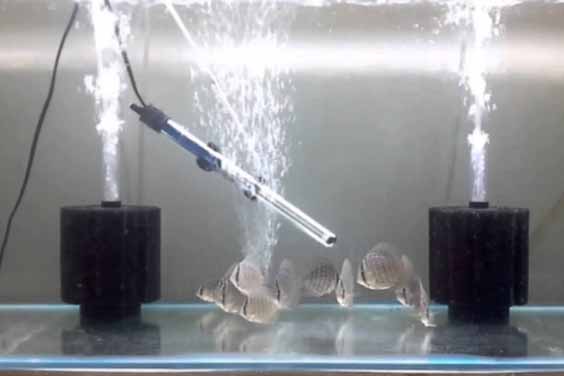
Source: fishsubsidy.org
Your sponge filter comes attached to a lift tube and also features an air pump or a powerhead. The air pump is used to push the water through the sponge to facilitate the filtration.
When the air pump is turned on, water is lifted through the filter which then produces air bubbles. These air bubbles could be quite loud and may also be inconsistent where they start and stop.
To reduce this, using an air stone is the best option. An air stone is a weighted tool that is used to diffuse the air coming from your air pump. When this is done, the bubbles produced in the water are smaller.
The steady and consistent stream of the smaller air bubbles results in less noise and also leads to better and efficient filtration.
Once the water bubbles are in effect, they help lift the water into the lift tube and out into the aquarium. The water is now left clean and free of all debris that was present before filtration.
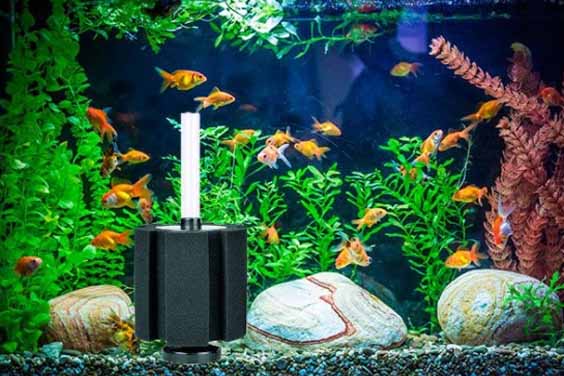
Source: fishlab.com
As discussed earlier, the sponge filter can be used to fulfill both mechanical filtration and biological filtration.
These are two different types of filtration that are used to remove different things from the water. To better understand what your sponge filter removes, we’ll have to take a look at both of these filtration systems.
Mechanical filtration is where the water is pumped up the sponge using an air pump and the unwanted matter is filtered out. This method mainly addresses the removal of solid debris including uneaten fish food, fish waste, and other tiny particles.
With this, you should be in a position to see that the pore size of your sponge is very important.
If the pores on your sponge are small, then it will easily filter the small particles that may otherwise escape. You should pay attention to what you want to achieve with your filtration system and find the sponge that will help you with that.
The biological filtration system involves the use of the bacteria colonies that form on the sponge filter. This is a very crucial process seeing as it addresses a few things that the mechanical filtration system cannot handle.
The bacteria found in the sponge are referred to as “good bacteria” during the mechanical filtration, they are reintroduced back into the aquarium rather than being filtered out. These bacteria help keep the water clean and the aquatic life healthy with no significant damages.
As the fish feed, they are bound to relieve themselves and introduce waste into the water. When this happens the waste releases ammonia into the water which is very harmful to the fish and the health of the water.
This is where the bacteria come in handy by breaking down the ammonia into nitrite. Nitrite is however also not great for aquatic life and the water. The bacteria then start degrading nitrite into nitrate which is a less toxic substance even when left in the water.
This filtration system works great to ensure that even with the solid debris gone, the other toxic materials are also addressed.
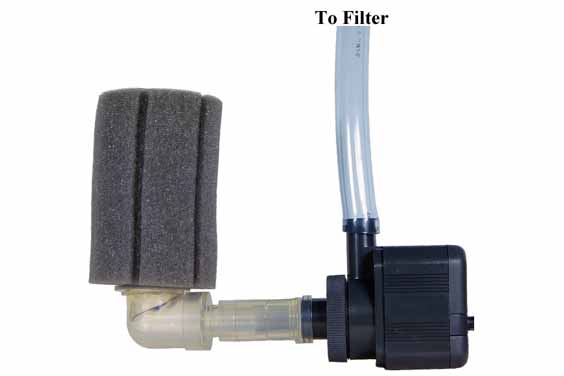
Source: americanaquariumproducts.com
Occasionally, people tend to use their sponge filters as a pre-filter that sifts out the larger particles to avoid clogging the main filter. This is mainly seen in an aquarium using a canister filter.
The sponge filter is placed on the narrow end of the opening in the canister to help with filtration. The water in the aquarium is drawn into the sponge using a HOB filter and removes the particles necessary.
It also works well to introduce the biological filtration system in an aquarium that was solely dependent on the mechanical filtration system. The best part about using the sponge as a pre-filter is that maintenance is made easier.
All you need to do is remove the sponge, clean it and take it back without interfering with the canister filter.
Also, with the use of powerheads and air pumps, you can easily manage to use more than one sponge at a time. This encourages a more efficient filtration system that ensures the process goes on without any hitches.
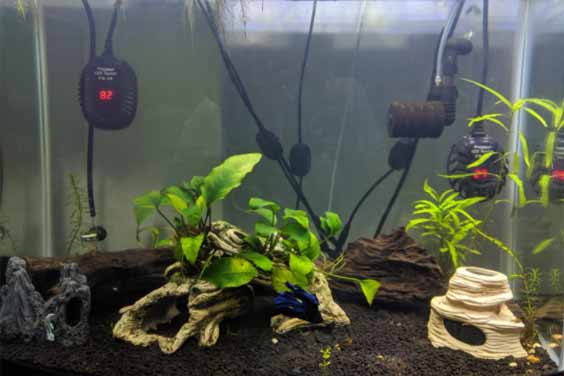
Source: reddit.com
Granted, the sponge filter is used in an aquarium to filter out dirt and leave the water clean but it also features other applications. These applications vary depending on what you use to power your filtration system
Using a powerhead to power the pumping of water from the aquarium through the sponge for filtration is not uncommon. It is a great option that can be applied in certain scenarios. They include:
Air pumps work by releasing air bubbles into the water which then thrusts it up the sponge for filtration. It is a great method that applies less pressure to the water flow. This tool is best used in the following scenarios.
Sponge filters are a great filtration system that offers both mechanical and biological filtration. Understanding how they work is quite easy and allows the users to operate them with ease.
When it comes to maintenance, all you have to do is learn how to clean your aquarium filter sponge. This will help facilitate a better filtration process that can address all the unwanted matter in your water.
Remember, filtration is essential if you want to have a healthy-looking aquarium with amazing aquatic life. Avoid letting your aquarium accumulate dirt to the point that you have a cloudy aquarium rather than a clean clear one. Invest in a sponge filter today and enjoy having healthy fish in your aquarium.

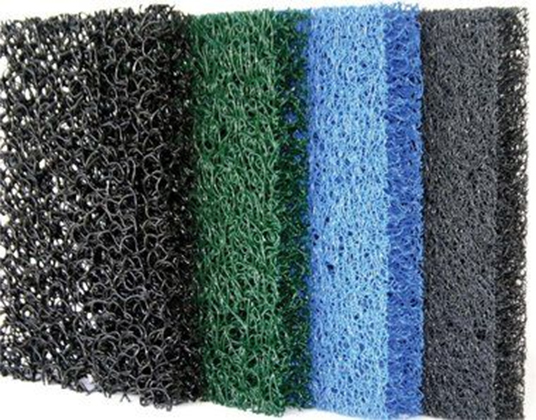
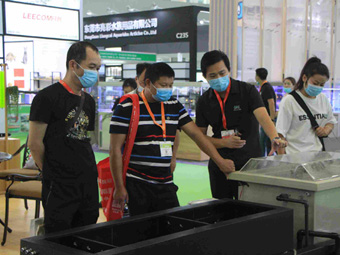

Leave a Reply